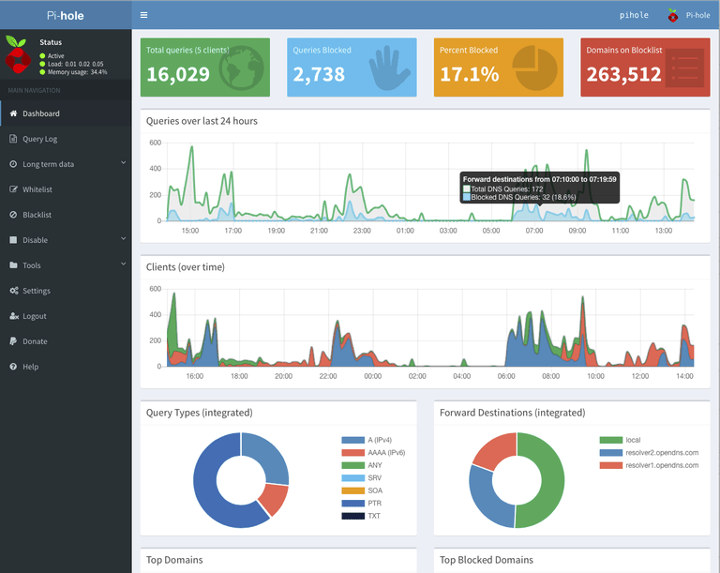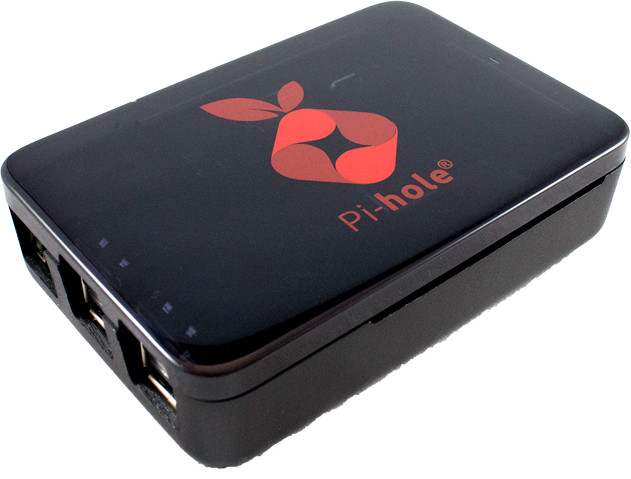If you don’t like getting tracked or see ads, it’s normally easy enough to install an ad blocker plugin in your web browser. But if you want to save some resources on your computer(s) and/or prevent online ads on other devices – including TVs – on your local network, it’s possible to do so via an external device / router using software such as Pi-Hole that can be installed on a Raspberry Pi board (or other Linux machines) in order to filter ads before they even get to your computer.
This would normally require you to get your own hardware, enclosure, flash the firmware on a board, and install Pi-Hole yourself. That should easy enough for most regular readers of this blog, but there’s no an option for less tech-savvy user, as Pi Supply and Pi-Hole have partnered to launch the Pi Hole Kit with everything in one packages and already setup.
The kit contains the Pi Hole box, a one meter Ethernet cable, a 2.5A international power adapter, a 16GB microSD card with Pi Hole software, and an HDMI cable.

Ad blocking is done at the DNS level, so while Pi-Hole is already installed, you’d still need to change your router’s DHCP options to force clients to use Pi-hole as their DNS server, or configure each device with Pi-Hole as DNS. First time configuration is also done on the command, and the Pi-hole list can be updated, but not automatically, only from the command line. So yes, it’s easier to use, but not foolproof.
Pi Hole kit can be purchased on Pi Supply for 79.99 GBP (about $108) plus shipping.

Jean-Luc started CNX Software in 2010 as a part-time endeavor, before quitting his job as a software engineering manager, and starting to write daily news, and reviews full time later in 2011.
Support CNX Software! Donate via cryptocurrencies, become a Patron on Patreon, or purchase goods on Amazon or Aliexpress





